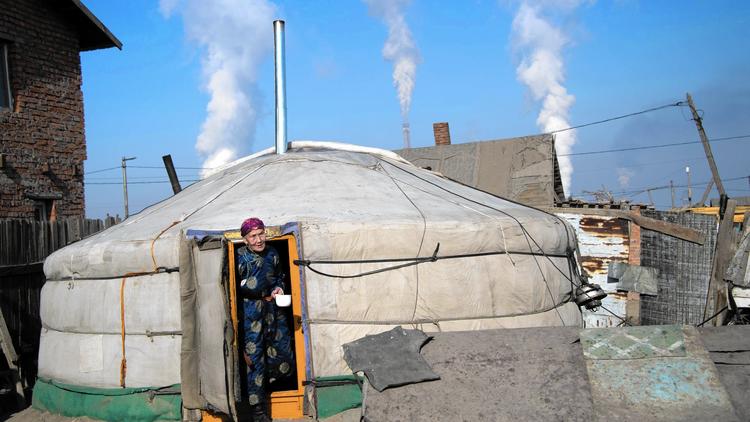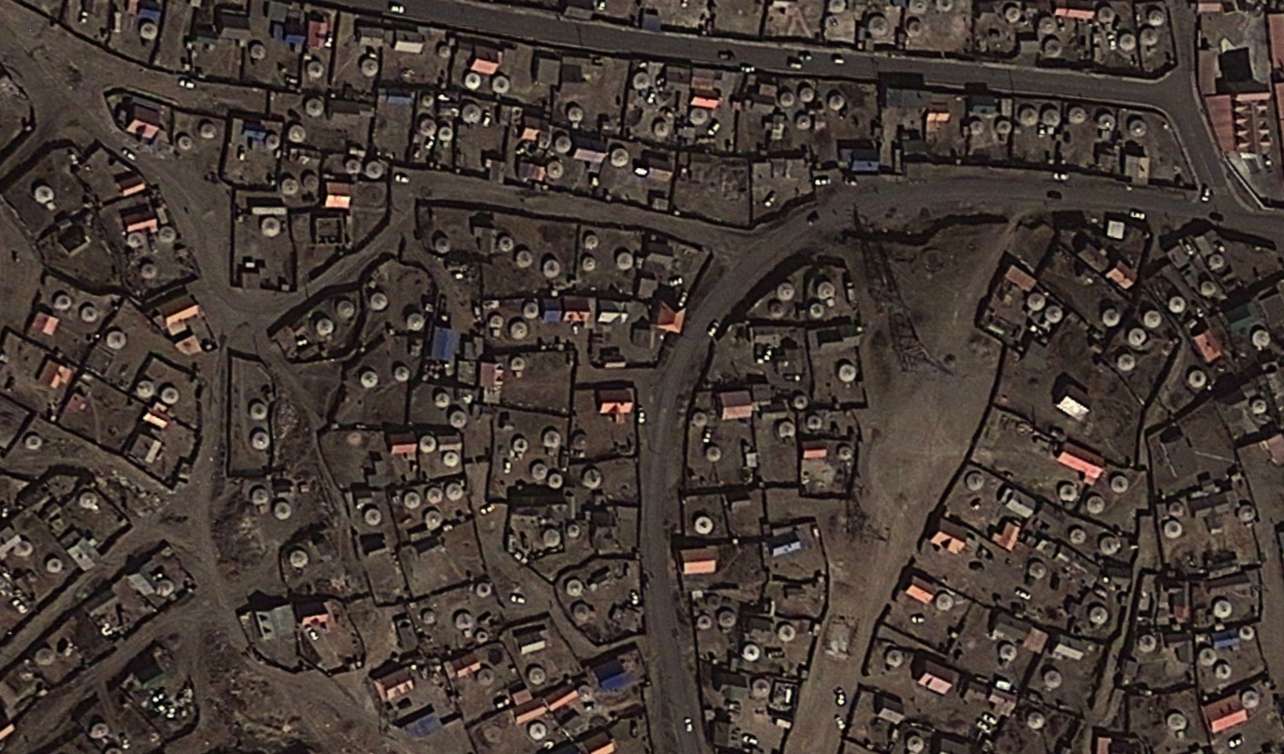Master Guide
March 2015 - Jan 20, 2022 4:27:51 GMT
|
Post by Hill on Apr 30, 2015 18:12:56 GMT
I have marked a few of the many camps in this area. A quick search will show you many more. They are most easily found from higher altitude by the brown soil created by dropping of the nomads' herds. Yurt is the usual term for the Mongolian felt tent or ger, but this word is not very much appreciated by Mongolians themselves because it is of Turkish origin and was used by the Western invaders and the last of them - the Russians.
The majority of Mongolians in rural areas, even Mongolians in urban downtown, live in these comfortable tents that nowadays are sometimes very well equipped with all "modern amenities". Ger is the truly universal traditional dwelling that has been adapted over the centuries to the realities of nomadic life in harsh steppes. It is incredibly warm in winter and cool in summer and is resistible to powerful winds without being fixed in the ground. Is is easily dismountable and transportable that is so important for nomads during their regular migrations.
Ger consists of a wooden frame and is covered with felt. It weighs from 150 to 300 kgs and can be assembled and dismantled in approximately 2 hours.
The interior organization of ger is identical everywhere: the door faces the south, the men’s place is in the west part, the north side is the place for honoured guests or old people as well as the place for the family altar, the east side is the women’s territory. The stove occupies the center of the ger.
Source |
|
Master Guide
March 2015 - Jan 20, 2022 4:27:51 GMT
|
Post by Hill on May 16, 2015 20:46:03 GMT
Yesterday I came across an article in the Los Angeles Times on their second page feature that was all about gers and the role they play in making Ulan Bator a very smoggy city. It has always been primed for poor winter air because of its location. It sits in a bowl and especially in winter very cold temperatures of up to -80 F (-62 C) allow the calm air to settle and retain pollutants. They used to be "just" dust settling in from desert areas. Now one of the main sources is the smoke from many thousands of gers relocated into the city. The climate is changing and many more very severe cold snaps have killed the herders herds and flocks. The city has jobs so many previously nomadic herders are resettling there. Apartments are expensive and gers can be set on relatively inexpensive rented lots. Gers are well designed to provide shelter in very cold weather with heat being provided by central coal-burning stoves. It is all of this extra coal smoke that is added to already bad air that makes the smog so terrible.  A ger, or yurt, in Ulan Bator, Mongolia’s capital. Such homes are not connected to the A ger, or yurt, in Ulan Bator, Mongolia’s capital. Such homes are not connected to the
city’s central heating grid, and their residents burn coal for heat.
(Johannes Eisele / AFP/Getty Images)  A view of part of the outskirts of Ulan Bator. I had to search through a number of years worth of historical imagery to find a day with air this clear. Attachments:Ulan Bator Gers.kmz (940 B)
|
|
Master Cartographer
April 2015 - Nov 26, 2024 22:38:11 GMT
|
Post by syzygy on Jul 27, 2017 9:39:44 GMT
Hi Hill and All! Glad I have found this posting by a search and can add my find(s) from northwestern Mongolia. A small village marked and a bigger settlement 30 kilometers SE to check, both related to this topic. Best! g Village of Gers - Turgen Mongolia.kmz (835 B) |
|
Junior Member
March 2017 - Jan 30, 2018 23:27:52 GMT
|
Post by bluesky on Jul 27, 2017 18:19:21 GMT
I've explored Mongolia on Google Earth a lot (btw, my username is not derived from Mongolia's nickname and I am not Mongolian) and I've noticed that gers can be found almost everywhere. They are very easy to find and there are a lot of them.
|
|
March 2015 - May 1, 2023 4:20:37 GMT
|
Post by diane9247 on Sept 4, 2017 5:55:20 GMT
Ulaan Baatar is surprisingly well covered by Street View. I was cruising around there a few weeks ago and was delighted to see gers all over the place in the residential outskirts, as Hill's screenshot shows. Gers.kmz (757 B) |
|
March 2015 - May 1, 2023 4:20:37 GMT
|
Post by diane9247 on Sept 4, 2017 6:25:56 GMT
Here is one with a handsome blue door. All doors that I saw face south, presumably away from wind.   |
|
Master Cartographer
April 2015 - Nov 26, 2024 22:38:11 GMT
|
Post by syzygy on Sept 4, 2017 6:42:40 GMT
great find of StreetView source! thanks D! All doors that I saw face south, presumably away from wind. and do not forget: in lack of windows, this is the only source of natural light inside the ger - all day this way sunlight can be let in, so indigenous people of mongolia do not need to use their chinese made LED-torches at least during the day!(: |
|
Master Cartographer
April 2015 - Nov 26, 2024 22:38:11 GMT
|
Post by syzygy on Oct 19, 2020 12:27:42 GMT
After opening view (illustrated), doubleclick on placemark in kmz folder (or at right bottom corner of the screen) to fly into a random StreetView location. Then exit SV and have an aerial lookaround to check, how this unique network of long, parallel streets looks from above! (Also you might check GE Photo layer - icons sparsely can be found around the "downtown", where also a modern Dinosaur Theme Park is situated.) Bayankhongor.kmz (979 B) Mongolian way of living together in a town:  |
|
